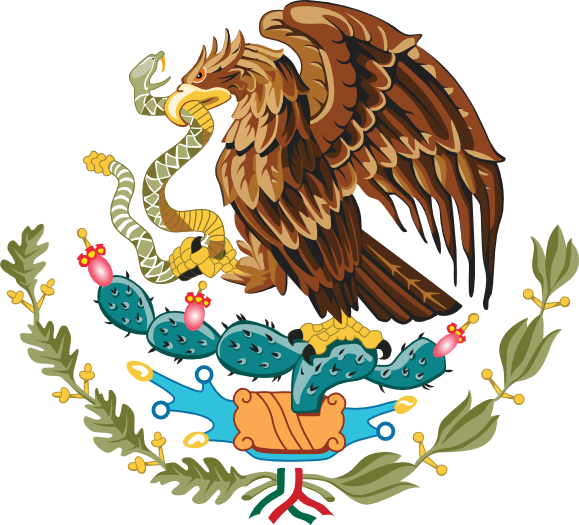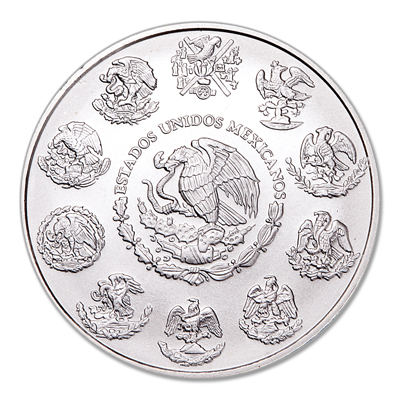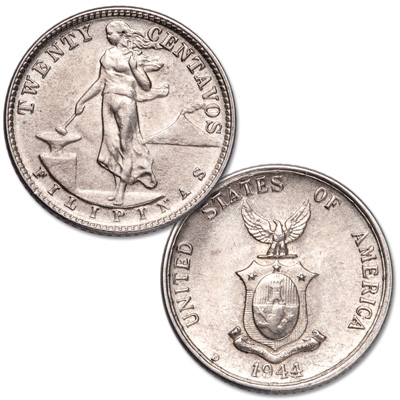5 Regal Raptors Worthy of Collecting
Ever since ancient civilizations switched from bartering to buying with coins, eagles have appeared as design motifs. Found in habitats around the globe, these powerful raptors as currency devices have symbolized the strategic combination of political and military power. They’ve also represented the triumphant struggle for independence. Wings extended, the design implies protection. In a previous Heads & Tails, we examined six types of U.S. coins with eagle reverses that could be the talk of your collection. Let’s take a look at the regal raptor on five highly collectible world coins.
The Libertad of Mexico

More than any other country, Mexico has embraced its eagle emblem as the obverse for its coins. World coin collectors would agree the motif is the most dramatic among eagle designs. It’s also unique.
The incredibly detailed device was inspired by Mexico’s original Aztec civilization. Grounded in a physical, mythical and spiritual culture, Aztecs believed the eagle was present at the sun’s creation. As a political symbol, the eagle celebrates Mexicans’ triumphant struggle for independence from Spain after 11 years of armed conflict that lasted from 1810 to 1821. The motif features a golden eagle, native to Central America, wrestling a rattlesnake for dominance while it’s perched on a prickly pear cactus, a dual representation of hope and endurance. How’s that for symbolism?! The design became the country’s national shield (above) and the motif for its coins.

When Mexico became the first country to issue silver bullion in 1982, the now-familiar eagle emblem appeared as the Libertad’s obverse. Then, in 2000, the Libertad’s obverse (left) changed to feature the shield as the center motif, surrounded by 10 past versions of the eagle exerting dominion over the snake on various Mexican coins. The detail work on a coin that measures just a little less than 2 inches in diameter is simply amazing!
The Commonwealth Centavo

In another symbol of freedom, the eagle appears on silver Centavos coins from the Philippines. The era of issue was 1935 to 1946, exclusive of Japanese occupation during WWII. The U.S. Commonwealth of the Philippines was the administrative body overseeing the former Spanish colony as it transitioned to independence.
The commonwealth’s emblem featured an eagle with open wings in a gesture of protection. On this 20 Centavos (right), the eagle’s wingtips point upwards. It’s perched on a shield and above a scroll reading “Commonwealth of the Philippines.”
Minted in fine silver, this coin design is nonetheless considered busy by many collectors. Numismatists find the obverse offers a more interesting historical and political reason to add this hard-to-find centavo to their world collection. Liberty is depicted in the act of striking an anvil with a hammer. The landmark Mt. Mayon, a volcanic mountain southeast of Manila, the capital city, is behind her. The motif represented the work being done by the U.S. government to help build an independent island nation situated on a vital trade route.
The Grand Duchy of Finland
Before Finland became an independent country, it was a grand duchy within the Russian Empire. And 600 years before that, it was an eastern province in the Kingdom of Sweden. So, having coins struck with a crowned eagle, its claws holding a scepter and orb, is hardly surprising.
What makes this fine silver coin, with a double-headed eagle reverse, worth adding to a world coin collection is its growing scarcity and its place in geopolitical history. It’s one of a few remaining monetary examples before the Bolsheviks overthrew the repressive Romanov rule. The crowned 50 pennia was never struck again after 1917.
Europe’s Other Double-Headed Eagle
Empress of the Holy Roman Empire, Queen of Habsburg and Bohemia – plus a string of other royal titles too cumbersome to list here – the Vienna-born Maria Theresa was royal by birth and by marriage. The obverse of the silver thaler, or dollar, paid tribute to her from 1740 to 1780. Its ornate reverse depicted an imperial double-headed eagle. Austria’s coat of arms was at the center, surrounded by four sections representing her main realms of Hungary, Bohemia, Burgundy and Burgau (in Bavaria).
In 1857, silver restrikes of this design were issued as trade coins. They were minted through the end of WWII, making them one of the last modern-minted double-headed royal raptor designs that harken back to an ancient civilization.
King Herod I
Given the number of skirmishes, battles and wars Rome engaged in as it went from a representational republic to an autocratic empire, the raptor with its curved and razor-sharp talons, proved to be an enduring symbol of power and military superiority.
Born across the Mediterranean in Palestine, Herod listed Mark Antony and Julius Caesar among his friends in Rome. He fled to them for help after an invasion of his homeland. The Roman Senate made him King of Judaea in 40 B.C. and sent him back with an army to lay claim to land that went with his new royal title.
This bronze half Prutah, also known as a Lepton for its small size, shows what’s commonly referred to as a seated eagle. The perched raptor portrayed a living being in defiance of the Second Commandment. This wasn’t the only time Herod defiled Jewish law. After capturing the holy city of Jerusalem, Herod installed a gilded bronze eagle over the temple gate. This graven image outraged religious students. They tore it down. In retaliation, Herod had them executed. Want to learn more about Herod, plus other ancient coins with eagle designs? Visit Littleton Coin’s Learn Center!
Throughout history, coins have provided a metal canvas for the portrayal of birds, animals and both fresh and saltwater fish species. Do you collect coins, or even paper money, based on these type designs? Please share a favorite find in the comments section!
Sources:
Davis-Marks, Isis. “Archaeologists Unearth 600-Year-Old Golden Eagle Sculpture at Aztec Temple.” Smithsonian Magazine, February 2, 2021.
https://www.smithsonianmag.com/smart-news/archaeologists-unearth-600-year-old-obsidian-eagle-mexico-180976894/
Golino, Louis. “The Coin Analyst: Why the Libertad Design Is Not Likely to Change.” CoinWeek, October 30, 2018.
https://coinweek.com/world-coins/the-coin-analyst-why-the-libertad-design-is-not-likely-to-change/
Britannica. “Philippines summary.” Accessed November 2, 2022.
https://www.britannica.com/summary/Philippines
Pelo, June. “Grand Duchy of Finland, 1809 -1917.” Accessed November 2, 2022.
https://www.swedishfinnhistoricalsociety.org/grand-duchy-of-finland-1809-1917/
Markowitz, Mike. “Coins of Herod the Great – CoinWeek Ancient Coin Series.” July 28, 2020.
https://coinweek.com/ancient-coins/coins-of-herod-the-great-coinweek-ancient-coin-series/



